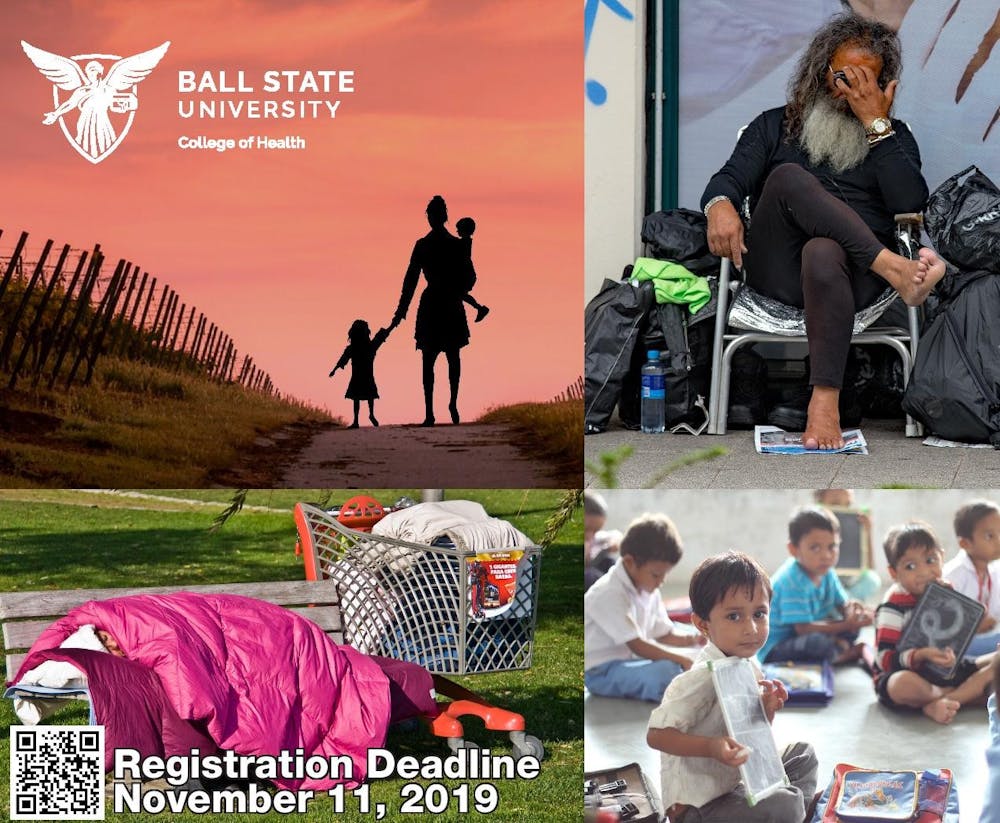Karrie Osborne said she felt stressed and overwhelmed when testing the College of Health interprofessional poverty simulation (COHIPPS).
“It kind of sounds like a game, but it doesn’t feel that way when you’re in the midst of it,” Osborne, director of clinical simulation at the College of Health, said. “There’s a debriefing that comes afterward where you talk about how you felt in the simulation and some of the barriers you experienced.”
From 6-9 p.m. Monday, 90 students and additional observers will gather in the Alumni Center’s assembly hall for the COHIPPS event.
When students enter the assembly hall, they will be assigned to a group of up to five participants, according to a handout for the event. The group will act as a family in the simulation, and each person will be assigned a role.
All families in the poverty simulation will experience either short-term or long-term poverty, the handout states. These families will vary from two-and-one-parent households to grandparents raising children.
The groups will develop a plan for how to distribute their paychecks and resources for the week and walk to different stations based on what they need, it states. The simulation is estimated to last two hours, with 15 minutes representing one week, making time for a four-week simulation and a discussion before and after.
COHIPPS will familiarize students with resources for people faced with poverty, including payday loans, welfare, pawn brokers and a social services office, it states.
Osborne said the debriefing after the simulation encourages students to “take some deep breaths, regroup, and come back to reality and understand that this was just a simulation.”
The subject of COHIPPS, she said, makes the simulation emotional, having experienced the simulation herself.
While registration for the event ended Nov. 11, Lori Porter, director of interprofessional education and practice, said students can add their name to the waiting list or come in as observers.
“Understanding the dynamic of poverty and how it affects people can prepare [students] for the workplace,” Porter said.
Osborne and Porter said the goal of the event is to show participants what poverty looks like and to emphasize that people sometimes do not pay medical bills or child care out of necessity.
COHIPPS, they said, was originally planned for 75 to 85 participants, but interest in the event prompted them to increase occupancy. This is the first year the College of Health is offering poverty simulation, though other simulations have been offered previously.
Aside from Ball State and people from the Muncie community, Osborne said, students from IU School of Medicine’s Muncie campus, Ivy Tech Community College and Taylor University were invited to the poverty simulation event by the Northeast Indiana Area Health Education Center (AHEC), which sponsors the event.
Porter said she hopes for “a great event and a great turnout” and would like to offer it on a regular basis in the future depending on interest in the event.
“Hopefully, what students will take away from it as it relates to their profession, they’ll start to think about how they can help or support someone who may be experiencing poverty out in the workplace,” she said.
Contact Grace McCormick with comments at grmccormick@bsu.edu or on Twitter @graceMc564.





